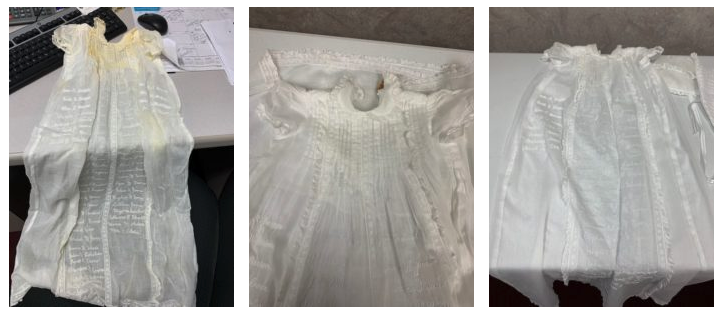Don’t you cringe when your favorite shirt, blouse, jeans, or jacket is clearly on its last leg? Sometimes your favorite, classic, still relevant pieces wear out before you’re ready to put them in the toss pile. We can’t prevent the fibers from breaking down completely (washing & wearing naturally breaks them down little by little) but here are some pro-active steps to take when choosing garments followed by care tips to keep them looking new as long as possible.
Choosing a Quality Garment
Wherever you choose to shop for clothing , check the quality of the fabrics & cut of the items. Even an item thought to be a higher end garment could have a discrepancy. Overstock stores are more popular than ever due to the ability to find “high quality” items at a reduced cost but always do your due diligence and check the item for the following:
- Note how the garment hangs on the hanger. Do the seams hang straight? If there is a lining, does it flow smoothly with the cut of the garment? If you crush the fabric in your hand, does it resist wrinkling?If the garment has a pattern does the pattern line up at the seams.
- Check the garments construction. Look at the hems, stitching, zippers, buttons & button holes. Hems that are 1-1/2 width are best and should be nearly invisible with no puckering when the item is hanging. Seams should be straight and preferably wider v. narrower to prevent breakage and fraying. Zippers should zip and unzip easily and buttonholes should be sewn tightly with no loose threads.
- Read the label. Fiber content, blend level and care instructions are important clues to how the garment may perform over time. Instructions that indicate wash in cold water could mean the fabric may shrink or the dyes may run or fade. The hang tag also contains additional information such as the fabric characteristics and a description of it’s quality. Cottons, linens or rayons have the potential to shrink, stretch or fade without proper care.
Caring for your garment:
As we mentioned last week, some garments can be worn more than once before washing. Washing too frequently can shorten a garment’s life span. Always follow the care label instructions for washing each garment and use the proper amount of detergent. Detergent left in the fibers can damage the fabric. Here are more care tips to help your clothes last.
- Store your clothing properly. Put your clothing away in a drawer or on a shelf and hang your hanging garments on good hangers to support your clothes. Thin wire hangers can cause your knits to sag so we recommend folding your knits. Never hang wet items on a metal hanger. Heavier items such as suit jackets and blazers should hang on hangers that support the shoulders and allow them to drape naturally.
- Weed out your closet to avoid over crowding and allow your favorite items to breath. This can eliminate the need to iron or steam a garment before wearing.
- Remove stains and/or point them out to your Dry Cleaner immediately. See our Tips on Stain Removal.
- Make repairs as needed either by yourself or choose a quality Tailor/Seamstress.
- Air dry clothing when you can by hanging or lying it flat to dry. When using the dryer, be careful not to leave them in too long. Dry them just long enough to remove wrinkles and moisture. Over-drying garments can “set” wrinkles, increase static cling, and cause shrinkage.
- If you need to iron, use an ironing board and stretch the garment flat. Again, check the care label and follow it to a “T” when choosing your heat setting. Keep the iron moving to prevent scorching or burning the garment.
- Let items rest, give expensive investments extra care, and remove dust or lint regularly.
And last but not least, choose a reputable dry cleaner to ensure your dry-cleaned items and/or family wash items are receiving the proper treatment and care.
– S.O.




